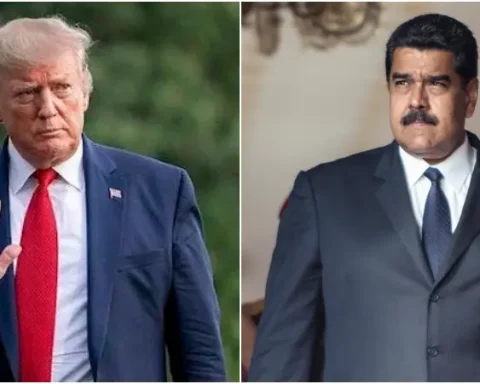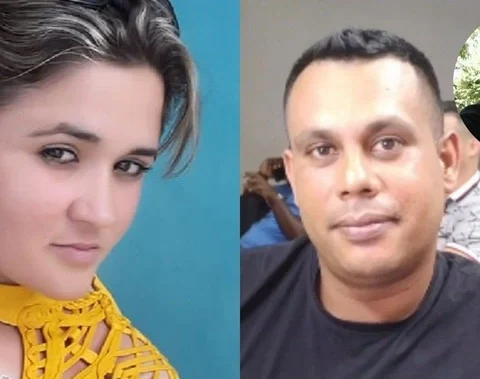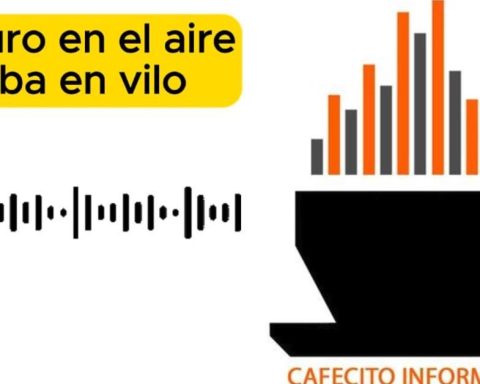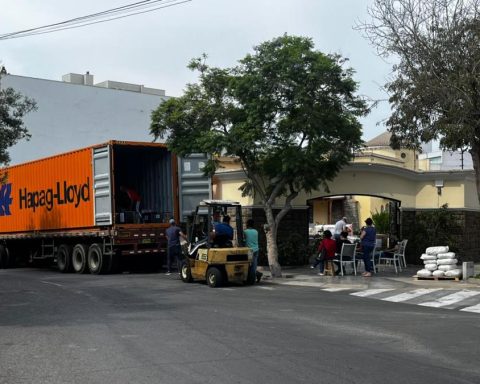Havana Cuba. – Carmen, an elderly woman who suffers from a chronic respiratory disease and who has to be connected to a ventilation device during crises, she fears dying when darkness and unexpected attacks of her ailment coincide. When they turn off the electricity, which happens several times a day and for hours, Carmen thinks that those sad and boring moments could be the last of her life.
“It’s a roulette. As soon as I see the light go out I begin to fear the worst. Until now I have been able to overcome the crises but because they have not been big ones. As soon as I have one of those and there is no light, I know I am leaving”, says Carmen, while she closes, like each one of her sentences, with the same complaint: “In this country there is no one who lives” .
A few months ago, when her daughter sent her the ventilation device from the United States, she thought that her ordeal had ended after several years of hospitalizations that resolved nothing.
“Nothing I couldn’t do myself at home,” says the old woman. “I had more trouble getting to the Guard Corps and they told me the same thing, that there were no medications, that they admitted me to lie on a bed without any attention. I thought that with the fan everything would be over, but in this country it is one difficulty after another”, concludes the old woman.
Aymara, Carmen’s neighbor, also experiences moments of tension during the blackouts. She is young and does not suffer from any disease for which she must depend on an appliance connected to the current, but she is the mother of two small children who she has to fan all night so that they do not suffer from the heat and mosquito bites . She lives in Managua, a town on the outskirts of the Cuban capital, where there are rural areas that report power outages of more than 10 hours.
“In this part of here they have cut off the electricity for more than 10 hours in a row,” says Aymara. “At night it is hellish because everything is bush and the mosquito lifts you up in weight. For the children to fall asleep I have to put the cot in the doorway so that some air can circulate and, in addition, fan them (…). With this heat if I put the mosquito net on them they suffocate and if I leave them in the room, the same. My husband and I take turns, and even so they wake up full of welts, their little faces, their hands, soaked with sweat, and we are worse, with dark circles under our eyes that reach the floor”.
But even though the situation of the children is horrible, for Aymara the worst thing during the lack of electricity is the possibility that the food in the refrigerator spoils, after the difficulties they have had to overcome to get the little food they keep, mainly for children.
“The other days were 17 hours straight without light; all the food that she had made from the day before went rotten. Here you cook with electricity. My children are small, I cannot give them spoiled food. There are people here who have lost meat, chicken, packages of hash, with how expensive all of that is, it is very painful, and the murumacas what you have to do to get them out there, the money it costs to eat and find food. By itself sometimes (food) arrives short of cold to the stores, and on the other hand they put the blackout so that you completely screw up. It seems that they did it on purpose, I don’t know, because here money is thrown in little flags, pulovitos (t-shirts), full tummies and meetings with air conditioning”, denounces Aymara.
Where they suffer least they call them “blackouts”, but where they have been most vicious, far from the center of Havana, there are those who call them “alumbrones”, recalling those almost perpetual darkness of the 90s, when the fall of the communist regimes of Eastern Europe caused the worst economic crisis that we have experienced in Cuba, with harmful effects similar to those we are suffering today, when food, fuel, medicine and, for many, especially young people, the reasons to stay are scarce. in a country where it seems that misery, in addition to being generalized, tends to be endemic.
Where did the Russian credit go?
“We Cubans fear hunger, although sometimes, with better or worse luck, we know how to escape it,” says Enrique, a young university student who says “he can’t take it anymore.”
“You live in a constant hot flash, putting your body through the nooks and crannies of the black market, which everyone knows is connected to the gigantic corruption that sustains the socialist state company, and this to the Government, which is like a bottomless sack. It swallows and swallows money and resources from everywhere and we don’t see progress in any way. Only for the worse”, protests the young man, while he questions the fate of the credits that the Cuban regime once received from Russia for the modernization of several thermoelectric.
“We have a mixture of panic and hatred for blackouts precisely because there is very little we can do to escape them, with all the evil they bring with them and that is not reduced to darkness, heat, mosquito bites or boredom ( …). We will never be free from blackouts. Since when are they with the story of the repairs of the thermoelectric plants? I was a child when they already told me that bedtime story. Where is the money that the Russians supposedly gave to build thermoelectric plants? Nobody talks about it. They say it’s the blockade, that they need I don’t know how many thousands of dollars. And what about the money from the Russians?” Enrique questions again.
According to information from the Russian press agency RIA Novosti, reported even in several journalistic media of the Cuban regimeIn October 2015, the Russian Ministry of Finance granted Cuba a loan of 1.2 billion euros, specifically for the “construction of energy blocks in two thermoelectric plants, for a total of four generation units, each with capacity for 200 MW.
In addition to that figure, according to the same information source, the Council of Ministers of the Eurasian country approved the granting of another 100 million dollars for the modernization and expansion of the Antillana de Acero metallurgical plant, plus other millionaire amounts also destined for the development industrial. However, nothing has been said to date about the completion of the loans and their results, although a recent debt deferral suggests that they were effective.
According to a source linked to the Ministry of Energy and Mines (MINEM), and who agreed to offer statements to CubaNet Under conditions of anonymity, it was learned that, in addition to the 1.2 billion granted on that occasion, prior to that date there were at least two more Russian financing agreements between 2009 and 2015, with similar amounts, although at no time were they translated. in significant improvements in electricity generation systems, which, according to the information pattern reiterated by the official press, are facing obsolescence, with technology that exceeds 25 years of exploitation.
“I hear that it is very old technology, that is true, but what was done with Russian financing is not questioned, which is more than 3 billion euros, possibly double that, in less than 15 years ( …). I can assure you that it is not money invested in maintenance, whoever says so is lying. Nobody has seen that money here (MINEM). Nothing has been said about that (…), the Turkish patanas are part of other more recent agreements and with credits agreed with Turkey, “says the source consulted.
According to this MINEM official, there are six floating plants supplied by the Turkish company Karen between mid-2021 and April 2022, as part of an agreement signed with an extension of payments, with minimal interest, until 2028, plus the possibility of establish extensions until 2030. However, the leasing of this equipment represents an expense of over 1,500 million dollars per year, despite the fact that the generating capacity of these plants (15 MW/h) does not satisfy the current demand for energy ( over 3,300 to 3,500 MW/h), something that has unleashed numerous criticisms, most of them reproaching that so much money has not been invested in the technological renovation necessary to put an end to blackouts once and for all.
Cuba has an industrial potential of more than 6,500 MW/h, but its actual generation capacity is barely half that (over 2,600 MW/h). It currently has eight thermoelectric plants for a total of 20 generating blocks, most of them with Soviet-era technology, and of which about a dozen are currently out of service or operating at minimum capacity. Added to this crisis are the numerous failures in the distribution systems, mainly due to a shortage of transformers, despite the fact that most are domestically produced with components imported from China and Russia.
Receive information from CubaNet on your cell phone through WhatsApp. Send us a message with the word “CUBA” on the phone +1 (786) 316-2072, You can also subscribe to our electronic newsletter by giving click here.
The post Blackouts in Cuba: No definitive solution in sight appeared first on CubaNet.















